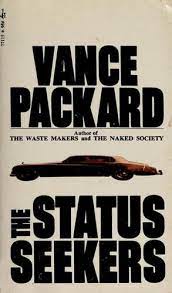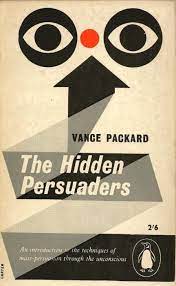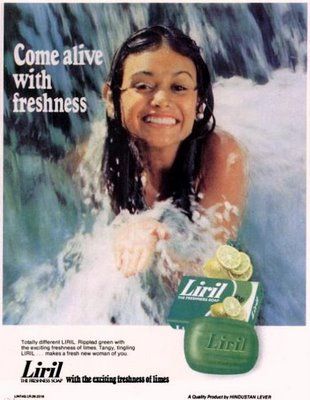The continuing relevance of Vance Packard and his warnings against unbridled consumerism

Contents
Introduction
Vance Packard
Vance Packard’s books
The Hidden Persuaders
Eight Hidden Needs
Assessing Vance Packard
Conclusion
Postscript
Introduction
As a young, self-appointed home librarian, dusting and rearranging books, I couldn’t help browsing through them, whenever I found time. Literature apart, two authors with maximum books, if memory serves me right, were Bertrand Russell and Peter Drucker. I am not counting the former under literature, where he got his Nobel in 1950. Not far behind, jostling for space among the voluminous John Galbraith, Chester Barnard, Lawrence Appley, Alfred Sloan, and others, were four slim volumes by Vance Packard. I distinctly remember their titles: The Hidden Persuaders, The Naked Society, The Status Seekers, and The Waste Makers. Vance Packard is not that widely known today. Nevertheless, his pioneering work as a social critic, especially of American society, influenced a wide range of fields from consumerism to individual privacy and a sustainable globe.
Vance Packard

(www.openlibrary.org)
In its obituary of Vance Packard, dated 13 December 1996, The Washington Post described him as “the popular sociologist and author whose best-selling books analyzed and criticized 20th century American advertising, business practices, psychology and social mobility…” It went on to add that he
“… also wrote about changing sex roles, child-rearing, government intrusions into the lives of private individuals and the concentration of wealth among an elite few. … He was social investigator, researcher, observer and gatherer of facts, and he generally viewed the trends and developments he wrote about with alarm, sorrow, outrage or a combination thereof.”
The New York Times described Packard as “a journalist turned social critic whose best-selling books — ”The Hidden Persuaders,” ”The Status Seekers” and ”The Waste Makers” — warned Americans in the late 1950’s about the excesses of advertising, social climbing and planned obsolescence.”
Vance Packard’s Books
Early books
The range of Packard’s work is obvious from their titles. The first two, on ‘How to Pick a Mate,’ (1946) and ‘Animal IQ: The Human Side of Animals,’ (1950) did not create a wave.









Vance Packard’s first best seller
It was the third, The Hidden Persuaders (1957), a critique of the practices of the advertising industry, that became a bestseller, topping the charts for several weeks. It brought the concept of ‘subliminal advertising’ to popular discussions. I will come back to this book in further detail later.
Social and corporate climbers
Packard’s 1959 book, The Status Seekers, added the phrase ‘social-climbing’ to the lexicon. The Pyramid Climbers (1962) continued on the theme of Status Seekers but with a focus on corporate executives and the compromises they have to make to go up the corporate ladder. Did the book influence Mani Shankar Mukherjee’s novel, Seemabaddha (Company Limited), on which Satyajit Ray made the second of his Calcutta trilogy with the same title? The third of the Calcutta trilogy, Jana Aranya (The Middleman), was also based on another of Mukherjee’s novels.
Personal surveillance
Shoshanna Zuboff’s 2019 best seller, The Age of Surveillance Capitalism, draws attention to the perils of a digital society and its threat to individual liberty. In 2019, it was shortlisted for the FT-McKinsey Business Book of the Year. She makes no reference to Packard in her voluminous book of 700+ pages. But, Packard foresaw the impact of technology and surveillance methods on individual behaviour in his 1964 bestseller, The Naked Society.
Planned obsolescence
The Waste Makers (1960) critiqued corporate policy of planned obsolescence and fiscal support to it by permitting faster tax write off of existing and working equipment, and its impact on the national psyche. As he wrote, “The voluptuous wastefulness of modern Americans could be seen not only in their littered parks but in market surveys.” He quoted one such survey to observe, “In most households we found there were two to five rolls of Scotch tape—but no one could locate any of them.”
Manipulating people and children
The sexual revolution of the 1960s was the subject of Packard’s The Sexual Wilderness (1968). A Nation of Strangers (1972) discussed the impact of corporate executive transfers across the country. Manipulating human behaviour through psychology and biological tests is the subject of The People Shapers (1977). The 1983 book, Our Endangered Children, is about children growing up in a society challenged by all the above issues as well as the one discussed in a later book, The Ultra Rich.
Barbarians at the Gate
The Ultra Rich: How Much is Too Much (1989), on the lives of 30 of the richest Americans. David Horowitz, perhaps Packard’s biographer, listed this book in a separate section on Barbarians at the Gate, the title inspired by Bryan Burrough and John Hellyar’s bestseller on the fall of RJR Nabisco, also published in 1989.
The Hidden Persuaders
The Hidden Persuaders was not just Packard’s first bestseller, it was perhaps the best known ever. No other book of his went into as many editions and reprints.









Packard’s objective in writing The Hidden Persuaders is clear from his opening paragraph:
“This book is an attempt to explore a strange and rather exotic new area of American life. It is about the large-scale efforts being made, often with impressive success, to channel our unthinking habits, our purchasing decisions, and our thought processes by the use of insights gleaned from psychiatry and the social sciences. Typically these efforts take place beneath our level of awareness; so that the appeals which move us are often, in a sense, “hidden.” The result is that many of us are being influenced and manipulated, far more than we realize, in the patterns of our everyday lives.”
Packard called this “use of mass psychoanalysis to guide campaigns of persuasion” the depth approach. It had become a multi-million-dollar industry, and was being used in different fields with many ingenious techniques. Two of the book’s three parts deal with persuading us as consumers, and as citizens.
Eight hidden needs
Packard critiqued consumer analysis as using psychology to play on consumer fears and anxieties to drive their buying impulses. In the seventh of 23 chapters, which falls in the first part on consumers, Packard lists eight such hidden and compelling needs that advertisers and marketing use to increase sales. Packard described the process as follows:
“In searching for extra psychological values that they could add to products to give them a more potent appeal, the depth merchandisers came upon many gratifying clues by studying our subconscious needs, yearnings, and cravings. Once the need was identified, and certified to be compelling, they began building the promise of its fulfillment into their sales presentations of such unlikely products as air conditioners, cake mixes, and motorboats.”
(Chapter 7: Marketing Eight Hidden Needs, page 86 onwards)
We discuss these eight needs below.
Selling emotional security
In its early days, air conditioners and refrigerators were promoted as providing security. The comfort of home. The assurance from the feeling that food of one’s choice is always available at hand.
Packard cited the example of a show exhibiting children’s furniture where the president of the company promoted high chair, bathinette, and toilet trainer, that were displayed as giving the child a “home” and “feeling of security.” One could add the kids’ own corners at home, and their miniature offices.
Selling reassurance of worth
Packard quotes a Chicago Tribune study on how to build brand loyalty towards soap among women:
“They had been old-fashioned in their approach. “Most advertising,” it found, “now shows practically no awareness that women have any other motive for using their products than to be clean, to protect the hands, and to keep objects clean.” The depth-wise soap maker, the report advised, will realize that many housewives feel they are engaged in unrewarded and unappreciated drudgery when they clean. The advertiser should thus foster the wife’s feeling of “worth and esteem.” His “advertising should exalt the role of housekeeping—not in self-conscious, stodgy ways or with embarrassingly direct praise—but by various implications making it known what an important and proud thing it is or should be to be a housewife performing a role often regarded … as drudgery.”
The Hidden Persuaders, p. 88
“Dr. Smith, in his book on motivation research, makes the point that luggage makers can increase sales if they remind the public that they are selling a form of reassurance. Nice new luggage, he advises, gives a man a feeling of being important and gives him more bearing when he goes out into the world.”
The Hidden Persuaders, p. 88

In India, remember the original Liril ad of the mid-1970s, conceptualised by Alyque Padamsee of Lintas and featuring Karen Lunel, the original Liril girl, bathing in the Pambar Falls in Kodaikanal, against the jingle ‘La Lalalala la la la la’.
On a different take, Unilever advertised Dove, its another soap which came later, as celebrating women’s unique differences, making it a source of pride and confidence rather than shame and anxiety.
Selling ego-gratification
Slow sales in earth moving equipment was the subject of one study. They found that the problem lay with the credit for moving earth going to the machines! Based on the study, the images were changed to show the machines from over the operator’s shoulder. With the credit now going to the operators, and their egos gratified, sales picked up.

As we will see in my next post, providing huge trollies in super markets is aimed at making people fill them up. How belittling to have only one or two items in such a big trolley. And if you choose not to have a trolley, the staff, if trained well, will come running up soon with one. It would also satisfy their egos when they wait at the checkout counters with trollies brimming over. The customer’s pride and sense of power are palpable as lesser mortals with two or three items have to wait behind if there is no separate counter for less items.
Selling creative outlets
Targeting the creative urge of all human beings, especially men, older women, and those who cannot have babies, is the basis to promoting pseudo ‘pregnancy activities’ such as baking and gardening, and the sales of related products. This meant that cake mixes that required the ‘creative’ addition of eggs and milk sold better than those which just required adding water. This also explains builders allowing home buyers to customise, and doctors adding their personal touch to the standard drugs they prescribe.
Selling love objects
The example Packard gives for this may not be relevant today. But he suggests that advertising, even on music/reality shows on TV, that alludes to or caters to the basic human need to love and be loved, will promote the product.
If one were to transport Packard’s example to today, it would be about showing the child artist’s emotional parents sitting in the audience of a live competition, and shedding tears. Even on Kaun Banega Crorepati, where personal details of the participants, including their connect with their near and dear, keep the audience hooked.
Selling sense of power
Automobiles with ever higher horsepower is an example of selling sense of power. As Packard describes, “After psychiatric probing, a Midwestern ad agency concluded that a major appeal of buying a shiny new and more powerful car every couple of years is that “it gives him [the buyer] a renewed sense of power and reassures him of his own masculinity, an emotional need which his old car fails to deliver.” This is also at the basis of selling ever new brands of mobile phones and home computers.
Selling a sense of roots
This approach enjoins the unsuspecting consumer to hark back to the good old days. The one-line theme of “The good old days—the home sweet home wine—the wine that grandma used to make” helped Mogen David double its wine sales. One can see this approach even today in the sales of products based on traditional practices and wisdom – herbal toothpaste, for example.
Selling immortality
Life insurance is not just about security. Research showed that it perpetuates the policy holder’s influence over the family even after death. It is not just death but the influence being obliterated that makes many people buy insurance. Admen have exploited this emotional failing over the years. Packard quotes Weiss, a consultant, stating that “projective tests revealed the respondent’s fierce desire to achieve immortality in order to control his family after death. These men obtain insurance against obliteration through the knowledge that they will continue to dominate their families; to control the family standard of living, and to guide the education of their children long after they are gone.”
Weiss “proposed that in picturing the security and unity of the surviving family, the “living personality” of the breadwinner always be present by picture or implication. Not only should he be there in the family picture, “but he, and he alone, is the hero—eternally shielding, providing, comforting and governing.””
Assessing Vance Packard
Fierce critics called Vance Packard a self-styled expert. I don’t think he cared much about it. He was probably more worried that he had to promote his own books using the same methods that he critiqued.
What mattered was what he wrote about and how true he was to his prognostications. Thorstein Veblen, the original institutionalist who wrote The Theory of the Leisure Class (1899), probably inspired Packard. Veblen also faced criticism for his writings and was thrown out of his teaching job. Packard’s keen observations and sharp insight explain why many of his books still remain relevant.
Packard did not make much money from his books. He called himself a poor author. At the same time, Horowitz wrote that Packard “… was proud of the fact that his books covered many of the most important topics of the postwar period.”
Packard was probably the first journalist who would write about socially critical issues at great length. This was a space earlier occupied by academics. He would influence many contemporaries and a later generation of writers. This included Betty Friedan (Feminine Mystique), Alvin Toffler (Future Shock, etc.), and the New Journalism that evolved from the 1960s.
Conclusion
Vance Packard one of the greatest social critics of the 20th century. He was a keen observer of what was happening around him. He picked some of the most critical issues that afflicted American society in the post-war era. By extension, these were to soon become critical for the rest of the world. He researched these issues thoroughly, though in an anecdotal fashion, and laid out his theses in a unique and readable style. Packard’s books continue to be relevant more than half a century after he wrote them.
Postscript
I started writing on a regular basis with the onset of the pandemic. March 2020 to be precise. But, the spark came a few months earlier with a longish account of five days in Stockholm. Since then, nothing has given me as much pleasure as rediscovering Vance Packard. I have only scanned through Daniel Horowitz’s biography of Packard. It is perhaps the only one on him (Vance Packard and American Social Criticism, University of North Carolina Press, 1994). Going forward, I plan to dig deeper into this book and Packard’s other writings. I might come out with a few more posts on the work of Packard and its continuing relevance.
The original post this week was on games that supermarkets play. And the precautions that a customer needs to make. Researching for that took me to Packard. I will revert to supermarkets next week.
![]()
Very interesting post ! The other topics mentioned – Social climbers, Endangered children etc are also very interesting and look forward to separate posts on them in future.
33 years ago I took a normal, healthy diet and gave birth to a healthy, 3.5 kg baby. Today – my daughter is expecting and has been prescribed a ” nutrition supplement ” costing approx Rs 4000 per month – which ” guarantees to improve birth weight of the baby “. So did we fall for this marketing spiel ? You bet we did – emotions win over Vance Packard’s research, anyday